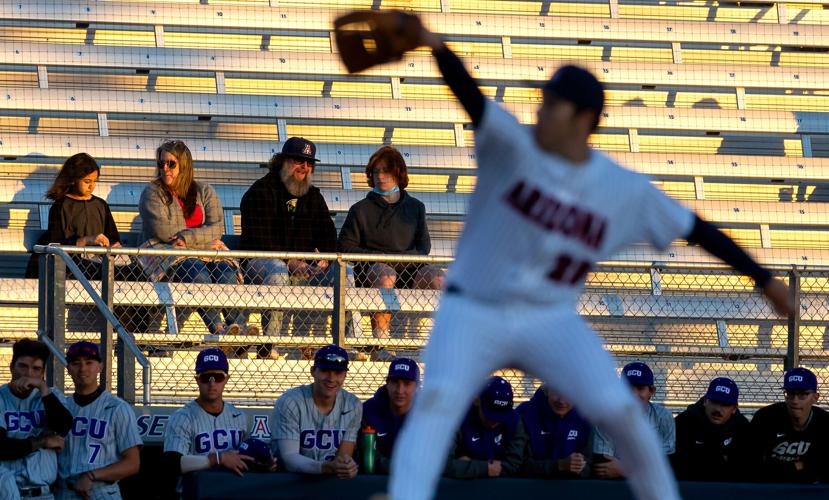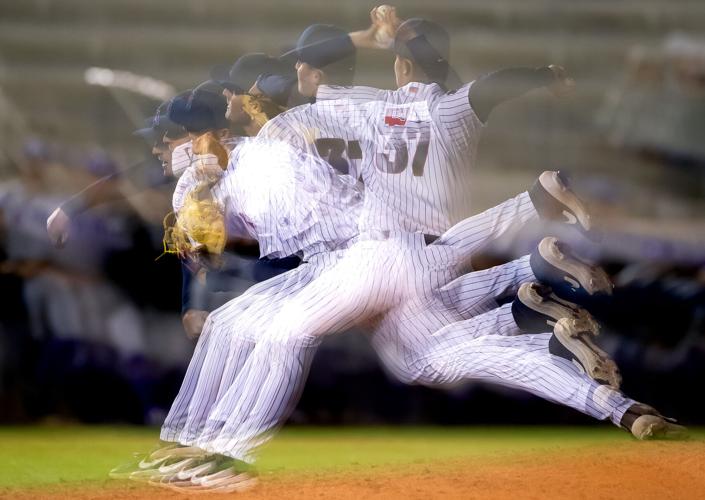Neither Arizona nor ASU has been shy when it comes to promoting their baseball pedigrees.
The cover of ASU’s 2022 baseball yearbook is boldly titled “College Baseball’s Grand Tradition.” The Sun Devils refer to themselves as MLBU.
The Wildcats are a bit more subtle, but anyone visiting Hi Corbett Field will immediately notice a large display in right-center field with the massive numbers 41, 4 and 18. What’s that? Number 41 represents the school’s NCAA tournament teams; 4 is the number of national championships; and 18 is Arizona’s number of visits to the College World Series.
Impressively, the retired jerseys of Terry Francona and Trevor Hoffman occupy prime real estate on the outfield fence, as do Arizona’s four national championship banners.
When Arizona and ASU played at Hi Corbett Field in the 1970s, often with overflow crowds close to 10,000, it was almost without doubt the nation’s No. 1 college baseball rivalry. For a quarter-century, 1965-90, the Wildcats and Sun Devils had a reputation equal to any in the game.
But when Arizona and ASU begin a three-game series Friday night at Hi Corbett the sobering truth is that neither the Wildcats nor Sun Devils have consistently been a top-25 program for more than a decade. It’s hard to believe, but ASU hasn’t won the national championship since 1981.
The game has changed. The world of college baseball, long ruled by West Coast powers, is now dominated by the finances-blessed SEC. Even the once-unthreatening ACC, a basketball conference, now has a stronger baseball presence than the Pac-12.
Since 2000, the SEC has filled 49 College World Series berths, the ACC 38. The Pac-12 is far in the distance with 18.
That’s part of the reason the Wildcats and Sun Devils this year dipped into their proud history to hire two coaches with immediately recognizable names and impressive MLB careers: Chip Hale and Willie Bloomquist. No more settling for unfamiliar outsiders from, say, Nevada and Indiana, which were the previous hires by Arizona and ASU.
Hale and Bloomquist were hired with one charge: Restoring their schools to national prominence,
The Hale-vs.-Bloomquist rivalry is loaded with Territorial Cup history. Two of the leading baseball players in their school’s histories now meet as head coaches. It’s the equivalent of say, an Arizona football team coached by Chuck Cecil meeting an ASU football team coached by Jake Plummer.
Both coaches know the turf. Hale, the 1987 Pac-10 Player of the Year, played 24 games against ASU. Bloomquist, the 1999 Pac-10 player of the year, played 18 games against the Wildcats. They well know the difference and all the sensitive feelings between “Forks Up” and “Bear Down.”
ASU has fired its last three coaches, Pat Murphy, Tim Esmay and Tracy Smith, and its identity within the Pac-12 has shrunk to the point that Oregon State is recognized as the league’s top baseball school, a shade ahead of Stanford.
Additionally, over the last 21 seasons, ASU has just four CWS appearances. By comparison, Cal State Fullerton made eight visits to Omaha in that period. North Carolina and South Carolina both have seven CWS appearances in that time. Rice, of all teams, has five.
Arizona has been better the last 10 years, winning the 2012 national title under Andy Lopez and finishing No. 2 in 2016 under Jay Johnson. But Lopez retired and Johnson jetted off to LSU in search of a better job. The one persistent knock on Arizona baseball over the last 42 years is that the Wildcats have won just five Pac-10/12 championships (1980, 1989, 1992, 2012 and 2021).
ASU has won a league-high 11 conference titles since 1978, but none in the last 11 years. Predictably, the long-productive streak of Sun Devils to MLB has slowed noticeably.

Arizona’s Josh Randall pitches during the Wildcats’ Feb. 22 home opener.
The Sun Devils rightfully boast that they have produced 112 MLB players, the third-highest total in history behind Texas and USC. But as of Thursday, ASU had just four active players in the big leagues: Austin Barnes, Kole Calhoun, Spencer Torkelson and Trevor Williams.
That’s half of the eight ex-Wildcats now on big league rosters: Willie Calhoun, Tylor Megill, Robert Refsnyder, Kevin Newman, Mark Melancon, Bobby Dalbec, J.J. Matijevic and Alfonso Rivas.
It is now on Bloomquist and Hale to catch and overtake Oregon State and Stanford at the top of the Pac-12, which won’t be easy. Even though the Beavers play in drizzleword, where the threat of rain is always a concern from March through May, they lead the Pac-12 in attendance this year with 3,429 fans per game.
The NCAA’s three leading baseball draws, per game, are Mississippi State (10,201); LSU (10,158); and Arkansas, (10,004). That’s more than triple Arizona’s average attendance of 2,948 at Hi Corbett this year.
The UA’s marketing crew understands that this isn’t the UA-ASU rivalry of the ’70s and ’80s, with near-automatic sellouts. For Friday’s opener at Hi Corbett, Arizona is staging Little League Day, with a parade of 20 or 30 youth baseball teams onto the field. Olympic silver medal diver Delaney Schnell will throw out the first pitch.
Maybe it’s not the good old days, but it’s a promising start in that direction.






